10 November, 2000
McMurdo Station
After breakfast I climbed up 762 foot Observation Hill to get a look at the station and its surroundings.
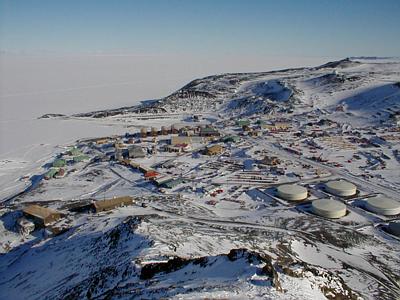
McMurdo Station is the main U.S. station and it is by far the largest in Antarctica. About 1200 people live and work here during the season from October through February. Only 250 stay over for the winter. It has grown significantly since the first facilities were built in the 1950s. This is the location from which Scott and Shackleton launched their attempts to reach the South Pole in the early 1900s.
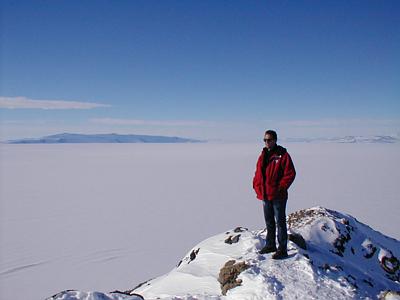
Behind me in the distance is White Island. The route to the Pole passed beyond that island, across the vast Ross Ice Shelf, up the Beardmore Glacier to the Polar Plateau, a distance of about 800 miles.
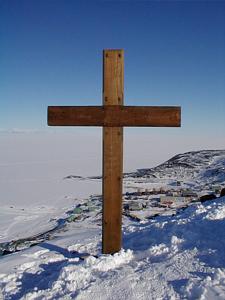
In 1912, Robert Scott and four companions perished while returning from the South Pole. This memorial was erected the following year by the remaining members of the expedition.
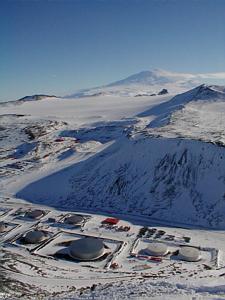
McMurdo Station is located on Ross Island. It sits on volcanic rock that extends from the flanks of Mt. Erebus, an active volcano. Steam can often be seen coming from the summit crater.

Ross Island sits at the edge of the ice shelf, which can be seen in the distance. Ice shelves can be a few hundred meters thick. They float on the sea while still being attached to the continent. New Zealand's Scott Base, a neighbor to McMurdo, can be seen on the edge of the island.
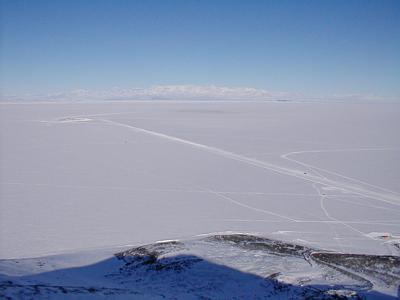
On the south and east sides of Ross Island are the Ross Sea and McMurdo Sound. The surface of the sound remains frozen much of the year. The sea ice, which is a couple meters thick, begins to break up in January allowing large ships to bring supplies right to the station. The runway where we landed yesterday can be seen out on the ice. Across the sound are the mountains of the Royal Society Range.
Contact the TEA in the field at
.
If you cannot connect through your browser, copy the
TEA's e-mail address in the "To:" line of
your favorite e-mail package.
|
